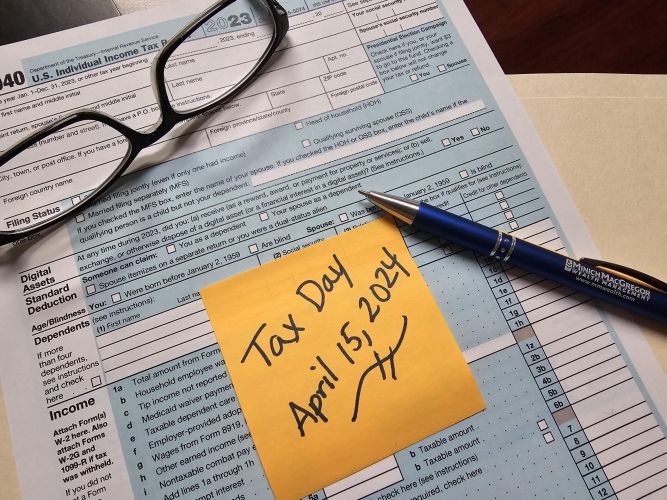Last Minute Reminders for Tax Planning

We’re well into tax season now! Of course, some people have already finished filing their returns by this point. If you haven’t yet, here are a few simple, last-minute tips to remember.
1. Have all your necessary documents and information in place before you start
Have you ever heard the phrase mise en place? It’s a French term professional chefs use that means “putting in place.” You see, a good chef ensures that all ingredients and equipment are set up and in place before they start cooking. This type of mindset is invaluable. It reduces mistakes and accidents and makes the entire cooking process less stressful!
You can practice mise en place with your taxes as well. Before you do anything else, gather every receipt, invoice, bit of paper, and piece of data that may relate to your taxes. Have it organized and close to hand. That way, when you start the actual filing process, you never have to interrupt your progress to look for something. Nor will you be likely to forget anything important. It just makes the entire affair easier, quicker, and less stressful.
Specifically, the IRS recommends that you have the following information before filing:
- Social Security numbers for everyone listed on your tax return.
- Bank account and routing numbers.
- Any W-2s, 1099s, 1098s, health insurance statements, and records of digital asset transactions. (Think bitcoin, NFTs, and things like that.)
- Any notices from the IRS citing an amount received for a certain tax deduction or credit.
2. Remember to report all types of income
In the rush to file, it can be easy to forget all the various ways you generated income last year. These days, many people have second jobs and side hustles that bring in money. Then there’s investment income, property, and even yard sales to consider! So, as you file, remember to report all income from:
- Any goods or items you have sold, whether online or in person
- Investments
- Part-time, seasonal, or gig work
- Rental properties
- Self-employment or other business activities
- Foreign accounts and assets
This will help you avoid any notices or bills from the IRS – something no one wants!
3. Contribute to your IRA if you haven’t already done so.
If you haven’t yet contributed to your IRA in the last year, there’s still time to do so. The deadline to contribute for the 2023 tax year is April 15, 2024. (Remember that if you do decide to contribute, you must designate the year you are contributing for.) For 2023, the maximum amount you can contribute is $6,500 if you are under 50, and $7,500 if you are age 50 or older.1
4. Get a written acknowledgment from charitable organizations you have contributed to.
If you gifted $250 or more to any charitable organization last year, the recipient must send you a written acknowledgment of the gift upon request.2 This should also state whether the recipient provided any goods or services in consideration for the contribution. (If so, the acknowledgment must include a good faith estimate of the value of those goods or services.)
5. Tell the IRS to direct deposit your refund to get it faster.
These days, eight out of ten taxpayers get their refunds via direct deposit.3 There’s a good reason for this – it’s the fastest and most secure method available! The IRS actually issues nine out of ten refunds in less than 21 days, but getting your refund via check adds unnecessary time to the process.3
Many people are unaware they can have their refund directly deposited into as many as three different accounts. That’s handy because it can help you allocate the funds in a more targeted way. For example, let’s say you want to use part of your refund to pay off a debt, another part to go into your rainy-day fund, and the leftovers to go on vacation. With direct deposit, you can ensure all three boxes get checked. Just have the refund portioned into the appropriate accounts!
Finally, you can track the status of your refund using the IRS’s Where’s My Refund Tool. You can find that here: https://www.irs.gov/wheres-my-refund
We hope you found this helpful. Wishing you a smooth, stress-free tax season!
SOURCES:
1 “IRA Contribution Limits,” IRS, www.irs.gov/retirement-plans/plan-participant-employee/retirement-topics-ira-contribution-limits
2 “Substantiating Charitable Contributions,” IRS, www.irs.gov/charities-non-profits/substantiating-charitable-contributions
3 “Get Your Refund Faster,” IRS, www.irs.gov/refunds/get-your-refund-faster-tell-irs-to-direct-deposit-your-refund-to-one-two-or-three-accounts